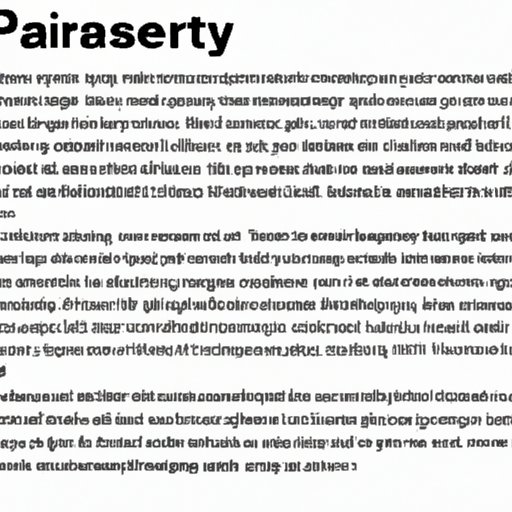Introduction
The opening paragraph of any piece of writing is the most important part of the document. It sets the tone for the rest of the content and provides the reader with an introduction to the topic. An introductory paragraph is typically the first paragraph of an essay or other written work. It is meant to provide the reader with an overview of the main points of the document and give them context for the material to follow.
Identifying the Main Purpose
Before you begin writing your introductory paragraph, it’s important to understand the goal and expectations of the reader. What do you want the reader to take away from your work? What do you want them to learn? Once you have identified the main purpose of your introductory paragraph, you can move on to the next step.

Using a Relevant Quote or Anecdote
One way to engage the reader in your introductory paragraph is to use a relevant quote or anecdote. Find a quote or story that is related to your topic and explain why it is important. This can be a great way to draw the reader in and get them interested in your work.
Asking a Thought-Provoking Question
Another way to capture the reader’s attention is to ask a thought-provoking question. Brainstorm questions that will challenge the reader to think more deeply about the topic and encourage them to explore the rest of the content. Choose a question that will get the reader thinking and make them curious to continue reading.
Providing an Overview
The next step is to provide an overview of the main points of the paragraph. Outline the main ideas that will be discussed in the following paragraphs and make sure the overview is concise yet comprehensive. This will give the reader a good idea of what to expect from the rest of the document.

Offering a Concise Thesis Statement
The last step before you can actually write your introductory paragraph is to craft a thesis statement. A thesis statement summarizes the argument of the paragraph and should be clear and concise. Make sure it accurately reflects the main point of the paragraph and gives the reader an idea of what to expect.
Introducing Key Terms and Definitions
If there are any key terms or definitions related to your topic, it’s a good idea to introduce them in your introductory paragraph. Explain the meanings of these terms and definitions so that the reader has a better understanding of the material to come. This will help ensure that they are adequately prepared to read and understand the rest of the content.
Conclusion
Writing a strong introductory paragraph is essential for any piece of writing. Identifying the main purpose, using a relevant quote or anecdote, asking a thought-provoking question, providing an overview, offering a concise thesis statement, and introducing key terms and definitions will all help you create an engaging introductory paragraph. By following these steps, you can ensure that your readers will be hooked and ready to explore the rest of your content.
(Note: Is this article not meeting your expectations? Do you have knowledge or insights to share? Unlock new opportunities and expand your reach by joining our authors team. Click Registration to join us and share your expertise with our readers.)
